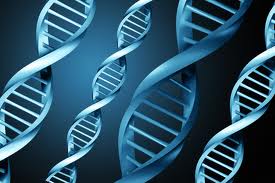WHAT IT REALLY TAKES TO BRING A DRUG TO MARKET
August 12, 2016 BILL POWERS, Ph.D.
Managed Healthcare Connect
http://www.managedhealthcareconnect.com/blog/what-it-really-takes-bring-drug-market
I still recall the chill, clean, antiseptic smell of the doctor’s office as a child — I found it reassuring. Feeling horrible after the exam, the doctor would scribble something onto a pad that my parents would take to the local pharmacy. And voila! After a few days of following his precise instructions, I was better. Even at a young age, I began to wonder where that magic in the little brown bottles came from. Little did I know that I would eventually become one of the ‘magicians’ who helped to put the magic in the bottle as a toxicologist for a pharmaceutical company.
The IMS Institute for Healthcare Informatics reported that the US economy spent approximately $425 billion on medicine in 2015 and is estimated to reach $610 billion by 2020. Global pharmaceutical sales in 2014, on the other hand, were $1 trillion and are estimated to expand to $1.3 trillion by 2018, according to the 2015 CMR Pharmaceutical R&D Factbook. Clearly big pharma is, well, big.
The US Bureau of Labor Statistics reports that there are more than 295,000 pharmacists in the United States.1 In the US, the pharma industry directly employs 810,000 people, including employees of big, medium, and small pharma companies, as well as ancillary support businesses. This represents a miniscule 0.00026% of the American population. Contrast this with the auto industry, which directly employees 1.55 million and up to 7.25 million when ancillary businesses are included.
The point is that big pharma is a big business in terms of sales that have a global impact. It is relatively small and insular, however, in terms of the people that it employs who have intimate knowledge of the industry. Because of this, most Americans, even those in medical fields, have little understanding of just where drugs come from. As a pharmacist, do you ever wonder how drugs get into those little brown bottles or what is in the injections you are dispensing?
Here is just a small bit of that information. According to the Tufts Center for the Study of Drug Development, it can cost up to $2.8 billion to get a new drug to market today!2 And according to California Biomedical Research Association, it can take an average of 12 years for a drug to go from starting at the research lab, to approval by the US Food and Drug Administration, to being prescribed to patients.3 The success rate for new drugs starting preclinical testing is estimated to be less than 10%. In order to get one new small molecule drug to market today, you would need to start with about 10,000 lead molecules in the discovery phase of research.
For that perspective, contrast the low pharma ‘hit’ or success rate with that of today’s oil and gas drilling industry. With accurate geological surveys, the success rate of hitting oil or gas can be in the 70%–80% range. This is a far cry from the 0.01% success rate in today’s big pharma industry!
To summarize, if one wanted to produce one innovative, small molecule drug, they would need to start with 10,000 drug candidate molecules and work on them for 12 years at a cost of $2.8 billion in order to get one new drug. Also, keep in mind that the new molecule has to be patented when it is discovered, and US utility patents last for 20 years. The industry burns most of its valuable patent life in the research and discovery phase, not the marketing phase.
So, the next time you provide a prescription for your patient, give a quick thought to all the time, money, and scientists who have worked to get your drug into its little brown bottle.
Bill Powers worked in pharmaceutical Research & Development (Johnson & Johnson) for 26 years, rising to the position of Vice President of Global Preclinical Development. Bill has a PhD in toxicology from the University of Cincinnati and is a Diplomate of the American Board of Toxicology. He is now a suspense/thriller author. His first novel, The Pharm House: A Harding Family Story, was named a Finalist in the Medical Thriller category of the 2014 National Indie Excellence Awards. Bill’s second novel, The Torch is Passed: A Harding Family Story, was named Best Book in the Category of Thriller of the Pinnacle Book Achievement Award for Winter 2016.
References:
- Bureau of Labor Statistics. Occupational employment and wages, May 2015. www.bls.gov. Accessed August 15, 2016.
- Tufts Center for the Study of Drug Development. Cost to develop and win marketing approval for a new drug is $2.6 billion. www.tufts.edu. November 18, 2014.
- California Biomedical Research Association. Fact sheet – new drug development process. www.ca-biomed.org. Accessed August 15, 2016.
———————————————————————————————–
“The Torch is Passed: A Harding Family Story” by Bill Powers
Now available in both print and ebook:
http://store.bookbaby.com/book/The-Torch-Is-Passed or Amazon
ebook $0.99 until end December 2016
Re-release of The Pharm House, debut suspense/thriller by Bill Powers –ebook $0.99 until end December 2016
http://my.bookbaby.com/book/the-pharm-house or Amazon

